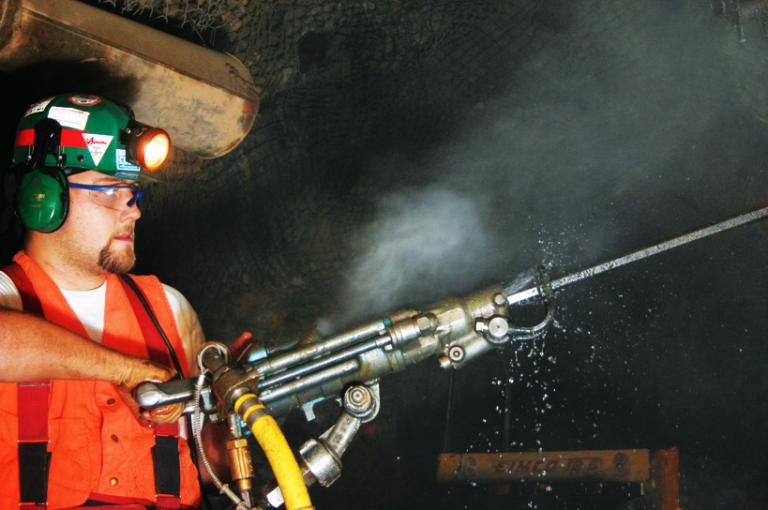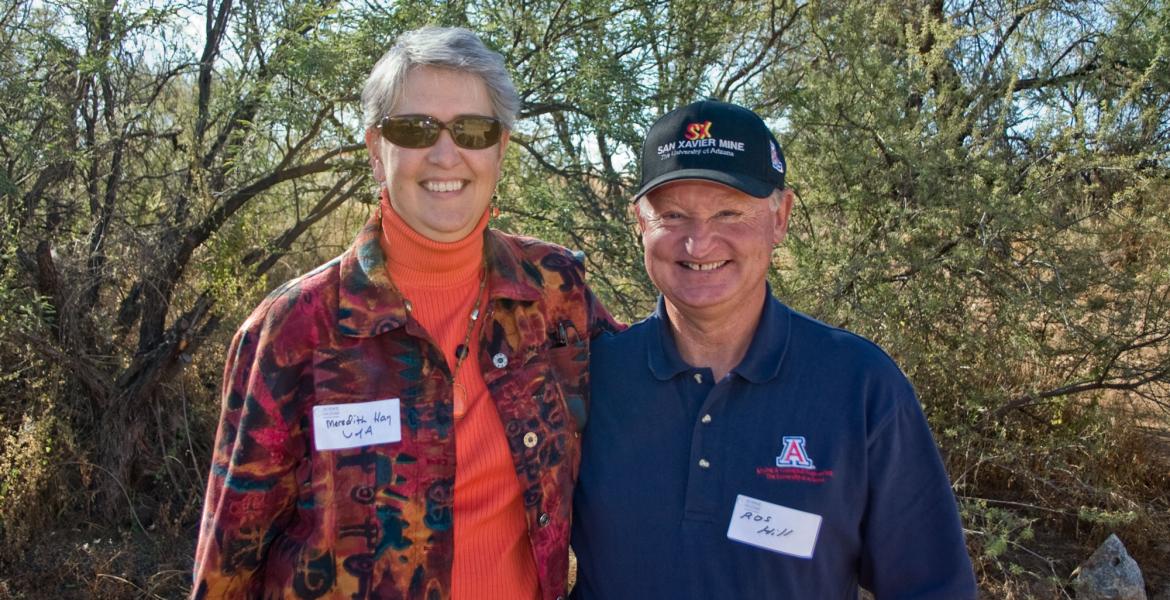New Institute for Mineral Resources Will Be Global Center of Mining Excellence
Arizona is sitting on a gold mine, figuratively speaking. Literally, this mineral-rich state is sitting on billions of tons of ore, including a copper ore body estimated at 1.34 billion tons, enough to meet 20 percent of expected U.S. demand for copper during the next 50 years.
Exploration near Superior, Ariz., by Resolution Copper Mining has detected what could be the biggest body of ore ever found in North America. Production is expected to begin in 2019; an April 2008 study concluded that the total economic benefit to the state during the 66-year project could amount to $46.4 billion.
“We haven’t even scratched the surface,” said Professor Mary Poulton, head of the UA’s Department of Mining and Geological Engineering (MGE). “This is a very well endowed state. And it is primary wealth, it is new money that enters the economy.”

Poulton is director of the newly established Institute for Mineral Resources (IMR), a collaborative push by Science Foundation Arizona (SFAz), the mining industry and Arizona’s universities, led by UA, to found a global center of mining excellence. “It’s one of the most exciting things going on in mining research in this country,” said Poulton. “We think this new initiative is going to have tremendous impact. For the first time, we will be able to create an interdisciplinary center that really can tackle the breadth of issues related to mineral resources.”
Poulton added: “Alternative and renewable energy strategies are material intensive. Arizona has an opportunity to lead in producing materials needed for alternative and renewable energies, and copper is at the core.”
The concept of the institute arose in 2004 at an MGE industry leadership board meeting. “Several industry people really felt that the depth and breadth of talent at this university was unique in the world, and that we needed to capture that in some package,” said Poulton. “It obviously needed resources to take off, so when this SFAz call for proposals came up, we were ready to respond quickly to it.”
Recognizing the pre-eminence of Arizona’s mineral wealth and UA’s faculty expertise, SFAz and IMR’s industry partners are funding the institute to the tune of $17.7 million spread over the next four years. J. David Lowell, for whom the institute will be named, has pledged philanthropic support of $2 million.
Lowell is the legendary mining engineer and 1959 UA engineering alum who discovered more copper ore than anyone else in history. He was elected to the National Academy of Engineering in 1999, and inducted into the American Mining Hall of Fame in 2002. His gifts to UA have established a scholarship, an endowed chair and a professional engineering program.
A major plank of the IMR’s strategy during this period, said Poulton, will be to “build capacity” in the areas of research infrastructure, workforce and organization. The objective of this capacity building is to firmly position the institute for the future, Poulton explained. “This will give us the leverage we need to attract more funding after this funding ends.”
The institute’s plans for the San Xavier Mining Laboratory are an example of how it will expand research infrastructure capacity. As much as $3 million will be sunk into upgrading the San Xavier Mining Laboratory. “Developing the San Xavier Mine into a lab with greater capability to test new mining technologies will generate revenue,” said Poulton. “We are going to turn it into a 21st century mine technology test site.”
“Building research capacity also involves bringing lab equipment up to higher standards so we can do more advanced geomechanics testing in support of deep underground mines,” said Poulton. “We will build up our mineral processing lab capabilities as well. A lot of the money is going to building research capacity.”
Those billions of dollars locked in Arizona’s subsurface deposits can only be extracted by skilled workers, which is where increasing workforce capacity comes into play. “We will get more students into these fields, and extend our education programs around the world,” said Poulton. “We’ll look at partnerships for teaching, not just with community colleges but also with universities around the world.”
“Global” and “around the world” crop up fairly regularly when Poulton talks about the IMR because she sees other universities in other countries as collaborating partners in the institute. “It’s not entirely envisioned to be a global mining university,” she said. “But what we’re trying to do is have a center that has global reach. And that means including partners from all over the world.”
The institute’s “global reach” will be achieved in large part by teleconferencing and online video. Poulton and MGE faculty are well versed in distance learning techniques—the department currently offers a number of Internet-based courses, including the J. David Lowell Master of Engineering in Mineral Resources.
The IMR strategy to build organizational capacity refers to the “who” and the “how” of the institute. “The institute will be an interdisciplinary research group,” said Poulton, “which involves building a multidisciplinary faculty around campus.” Poulton and her colleagues at the institute have written the IMR’s charter, and are working on the business plan. “A lot of nuts and bolts things need to be done with the institute in the next 6 months,” said Poulton.
Beyond the capacity-building strategy of the institute are the specific research projects. One project will test the feasibility of using low-quality water in mineral processing. Such processes currently use clean water because contaminants can adversely affect mineral recovery. “That is a problem that people have been looking at for 30 years, and nobody has succeeded yet,” said Poulton. “We think that with the new tools we have to look at what happens in the chemistry of mineral processing down at the atomic level, we’ll be able to fundamentally understand what the contaminants in the water are doing to harm the recovery.”

These new tools include atomic force microscopy (AFM) and other surface chemistry characterization tools. New expertise has also been brought aboard. Poulton used the Phelps Dodge endowment to hire a new an AFM expert: Jinhong Zhang, assistant professor, holds the Douglas C. Yearley Phelps Dodge Chair in Mineral Processing in MGE.
“For the first time we actually have the tools and the expertise to really look in detail at what’s going on in the chemistry,” said Poulton. “If you can understand it, then hopefully you can solve it.”
The institute’s other principal investigators are Professor Mark Barton of the College of Science’s Department of Geosciences, and Associate Professor Jeff Burgess, director of the Community, Environment and Policy Division of the Mel and Enid Zuckerman College of Public Health.
One of Barton’s projects at the IMR is focused on increasing knowledge about how and where mineral deposits form, which will make exploration more successful and provide a clearer picture of Arizona’s mineral inventory.
There are two main projects in Burgess’ area of expertise, public health. The institute will examine the effects on mine workers’ health of biodiesel emissions, and look at new models of safety training, such as that used in the Australian mining industry.
One of the institute’s great strengths is its close research links with its industry partners. In many cases, partner companies have an interest in a specific research project. For example, Newmont is the primary sponsor of the biodiesel emissions study, and Freeport and Resolution Copper are the primary sponsors of the mineral processing projects.
“All our industry partners are best in class in a number of areas related to safety and environmental stewardship and technology,” said Poulton. “This institute will take the best in the university related to mineral resources and partner them with the best companies.”


